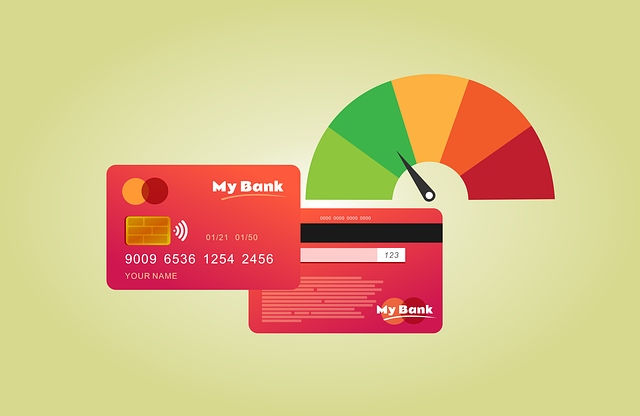What is Subordinated Debt in Business Financing?
Subordinated debt (debenture), also called sub debt, is a type of debt used in business financing that is a lower priority in the capital structure than senior debt. Subordinated debt holders are considered subordinate to senior lenders, which means they have a higher risk but potentially higher returns.
In contrast, senior or unsubordinated debt takes precedence over subordinated debt in repayment. Senior lenders get repaid first in cases of default. This distinction in repayment priority is crucial for investors and lenders assessing risk levels.
Subordinated loans play a vital role in providing additional funding to businesses beyond what primary loans or term liabilities offer. This usually takes the form of an unsecured loan. Companies commonly use this method when seeking capital for growth opportunities or expansion projects. Businesses can leverage subordinated debt to access funds that might not be available through traditional financing methods.
Understanding subordination agreements is essential in sub debt financing arrangements. These agreements establish the rights and obligations of both senior and subordinate lenders, defining how repayments will be made and under what circumstances. Clarity on these terms ensures all parties involved are aware of their roles and responsibilities.
Examples of Subordinated Debt
There are several forms of subordinated debt.
Mezzanine debt: Mezzanine debt is a type of financing that sits between senior debt and equity in terms of risk and repayment priority. It typically has higher interest rates and may include options for converting into equity. Companies often use mezzanine debt to fund growth, acquisitions, or other strategic initiatives.
Asset-Backed Securities: Asset-backed securities are subordinated debt backed by a pool of assets, such as mortgages or car loans. Investors in asset-backed securities receive payments from the cash flows generated by the underlying assets, with subordinated debt holders being paid after senior debt holders in the event of default. This structure allows for different levels of risk and returns for investors in the asset-backed securities market.
Bank-Issued Bonds: Bank-issued bonds are a common form of subordinated debt, typically ranking lower in priority for repayment than other creditors in case of liquidation. These bonds provide banks with additional capital to support their operations and growth while offering investors a fixed income stream with a higher risk profile than senior tranches. Investors in bank-issued subordinated bonds should be aware of the increased risk of potential losses compared to other debt securities.
How does Subordinated Debt Financing work?
A subordinated loan involves borrowing money from a subordinate lender after securing primary loans from senior lenders. The subordinated debt ranks lower in the capital structure, making it junior in debt obligations. This means that subordinated debt holders are paid after senior lenders in case of repayment, increasing the risk for the subordinate lender.
Subordinate lenders face higher risks as they are compensated only after the senior lenders have been repaid. In bankruptcy cases, the courts prioritize loan repayments to senior debt holders before junior debt holders.
Due to this increased risk, subordinated debt typically carries higher interest rates than senior loans. This compensates the subordinate lender for taking on a more junior position in the event of borrower default.
Financial institutions often provide subordinated debt financing to businesses looking for additional funding beyond what a senior lender offers. While it can be a valuable source of capital, companies must carefully consider the implications of taking on subordinated debt due to its higher costs and risk profile.
Some banks use subordinated debt because the interest payments are tax-deductible. Some mutual savings banks also use it to boost their balance sheet for Tier 2 capital regulatory requirements.
What lenders provide Subordinated Debt Financing?
Mezzanine lenders, private equity firms, and specialized finance companies typically issue subordinated debt. These lenders are willing to take on higher risk levels than traditional senior lenders, as subordinated debt ranks lower in priority for repayment in case of bankruptcy or liquidation.
Mezzanine lenders offer subordinated debt with a mix of debt and equity characteristics, providing companies with flexible financing options to support growth initiatives or acquisitions. A private equity firm may also frequently provide subordinated debt as part of its investment strategies, allowing it to participate in the company’s upside potential while receiving higher interest rates than traditional lenders.
Specialized finance companies focus on providing subordinated debt to businesses needing additional capital beyond what senior lenders can offer, making them a valuable resource for companies looking to expand or restructure their debt.
What are the benefits of Subordinated Debt?
Subordinated debt provides additional financing options for borrowers, complementing traditional senior lenders. This type of debt allows borrowers to secure funding from subordinate lenders, expanding their financial resources beyond primary loans.
It allows companies to raise funds without diluting existing shareholders’ equity. By utilizing subordinated debt, companies can access additional capital while maintaining ownership control and avoiding the need to issue more shares to raise funds.
Moreover, subordinated debt offers flexibility in repayment schedules and term liabilities, catering to borrowers’ specific needs. This feature enables borrowers to tailor their repayment plans to their financial circumstances and business requirements.
What are the drawbacks of Subordinated Debt?
Subordinated debt comes with inherent risks for lenders. It holds a lower priority in repayment compared to senior lenders in scenarios like bankruptcy, leading to potential losses for subordinate lenders.
The higher risk associated with subordinated debt results in borrowers facing elevated interest rates. This compensates for the increased risk undertaken by the subordinate lender, making it more expensive for companies to borrow through this financing option.
When a company opts for subordinated debt, it introduces complexities into its capital structure. Managing additional layers of debt obligations alongside primary loans can strain financial resources and require careful planning to ensure timely repayments.
Subordinated Debt Pros & Cons
Pros:
- Can provide additional funds for growth or expansion.
- Helps companies raise capital without diluting existing ownership.
- Enhances the company’s credit profile by demonstrating a diverse capital structure.
Cons:
- Carries a higher risk due to lower priority in case of bankruptcy.
- Interest rates may be higher than senior debt to compensate for increased risk.
- Can limit the company’s ability to take on additional debt due to existing subordination obligations.
How should my business manage Subordinated Debt?
Subordinated debt is crucial in your capital structure, positioned below senior lenders and unsubordinated debt. It serves as a long-term financing tool, ideal for funding growth projects or significant investments. Utilize subordinated debt wisely to meet your business’s strategic needs while ensuring timely repayment to senior lenders.
Clear communication with subordinate lenders is essential to avoid conflicts with senior lenders. Establish transparent terms and conditions for the subordinated debt, outlining repayment schedules and priorities. By fostering open dialogue, you can navigate potential issues and maintain harmonious relationships with all parties involved in your financial arrangements.
Regularly monitoring your company’s balance sheet is critical to understanding the impact of subordinated debt on your overall financial health. Assess how this form of financing influences your liquidity, leverage, and solvency ratios. This evaluation enables you to make informed decisions about future investments and manage your other debt obligations effectively.
Frequently Asked Questions
Here are the most common questions about subordinated debt.
What’s the difference between Senior Debt vs Subordinated Debt?
Understanding the difference between senior and junior debt (subordinated debt) is essential.
Senior Debt
Senior debt is a type of debt that takes priority over other forms of debt in the event of bankruptcy or liquidation. If a company defaults on its loans, senior debt holders are the first to be repaid from its assets before any other creditors.
Because of this priority in repayment, senior debt is considered less risky than subordinated debt. Investors in senior debt are more likely to receive their money back in full compared to investors in subordinated debt. This priority makes senior debt an attractive option for lenders seeking a more secure investment.
Junior Debt
Subordinated or junior debt has a lower priority for repayment than senior debt in the event of a company’s liquidation or bankruptcy. This means that if a company defaults on its debt obligations, senior debt holders are entitled to be repaid before junior debt holders receive any payment.
Junior debt is considered riskier for investors because of its lower priority in the repayment hierarchy. As a result, junior debt typically carries higher interest rates to compensate for the increased risk.
Unlike senior debt, which has a higher level of security and lower risk, junior debt offers the potential for higher returns but comes with greater uncertainty and potential losses. Ultimately, the key difference between junior and senior debt lies in their repayment priority in case of financial distress.
What types of businesses borrow Subordinated Debt?
Businesses across various industries often utilize subordinated debt as financing, especially those with ambitious growth plans. This type of debt is commonly sought by companies aiming to expand or restructure their operations.
Subordinated debt plays a crucial role in strengthening the capital structure of businesses by providing them with additional funds beyond what senior lenders offer. It allows companies to access more capital without diluting ownership stakes or using equity financing.
Common uses of subordinated debt include:
- Funding growth initiatives.
- Financing acquisitions.
- Refinancing existing debt.
- Supporting working capital needs.
- Enhancing liquidity position.
Is Subordinated Debt risky?
Subordinated debt carries higher risk levels compared to unsubordinated debt. In the event of borrower default, subordinated lenders have lower priority in repayment than senior lenders.
This lower priority makes subordinated debt more susceptible to default risks. Subordinated lenders may potentially lose capital and interest payments if the borrower fails to meet their obligations.
When considering investing in subordinated debt, it is crucial to analyze various risk factors. Fluctuations in interest rates can significantly impact the returns on subordinated debt investments.
Understanding the overall capital structure of a company borrowing subordinated debt is essential. The mix of senior and subordinated liabilities affects the risk profile of the investment.
When should my business consider Subordinated Debt?
Businesses should consider using subordinated debt when they’re raising capital but do not want to dilute existing ownership. Subordinated debt allows companies to borrow money without giving up equity, making it an attractive option for businesses that want to maintain control. Additionally, subordinated debt can be a good choice for companies with inconsistent cash flow or higher risk profiles, as lenders are willing to take on more risk in exchange for potentially higher returns. B
What is Subordinated Debt in Business Financing – Final Thoughts
Subordinated debt can be a valuable tool for businesses seeking additional financing while minimizing risk for senior lenders. By understanding the differences between subordinated debt and other forms of financing, companies can make informed decisions about their capital structure and overall financial health.
While subordinated debt may come with higher interest rates and greater risk, it offers flexibility and can help businesses navigate challenging financial situations. Ultimately, the key is for businesses to carefully weigh the benefits and drawbacks of subordinated debt before incorporating it into their financing strategy.
Contact us if you have more questions about subordinated debt or to apply for a small business loan. Our alternative financing experts can help you find the best funding options for your debt structure and business goals.














